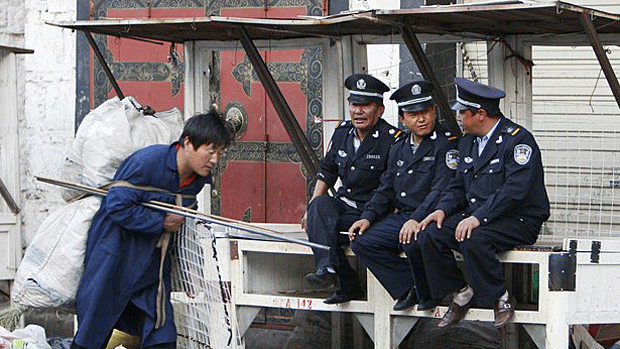Chinese authorities are removing thousands of Tibetan farmers and herders from their traditional livelihoods and subjecting them to forced military-style “vocational” training before sending them in groups to faraway places to work at new jobs, according to a new report released by the Jamestown Foundation.
Described as a drive to reduce rural poverty in Tibet, the campaign has already trained over half a million so-called rural surplus laborers during the first seven months of 2020, and mirrors similar programs already under way in northwestern China’s Xinjiang Uyghur Autonomous Region (XUAR), said researcher Adrian Zenz, an expert on Xinjiang and Tibet.
“This scheme encompasses Tibetans of all ages [and] covers the entire region,” said Zenz, a Senior Fellow in China Studies at the Washington D.C.-based Victims of Communism Memorial Foundation and contributor to the report.
The training is supervised by People’s Armed Police drill sergeants, includes instruction in Chinese law and the Chinese language, and is aimed at reforming “backward thinking” and “diluting the negative influence of religion”—factors believed by China to have hindered economic development in Tibet’s countryside, he said.
Training graduates who formerly worked as farmers and pastoralists are then sent to pre-arranged work destinations far from home to fill company requirements in road construction, cleaning, mining, and other low-skilled jobs, with some sent as far away as inland China to work in food-processing plants, Zenz said.
“The goal of the scheme is to achieve Xi Jinping’s signature goal of eradicating absolute poverty by increasing rural disposable incomes. This means that Tibetan nomads and farmers must change their livelihoods so that they earn a measurable cash income, and can therefore be declared ‘poverty-free.’”
Though official documents describe the program as based on voluntary participation, “there are clear elements of coercion during recruitment, training and job matching,” Zenz said.
“Since poverty is measured by income levels, and labor transfer is the primary means to increase incomes—and hence to ‘lift’ people out of poverty—the pressure for local governments to round up poor populations and feed them into the scheme is extremely high,” he said.
“Detailed quotas not only mandate how many surplus laborers each country must train, but also how many are to be trained in each vocational specialty,” Zenz said, citing data from a July 31, 2019 document from Tibet’s Ngari prefecture.

